
Table of contents:
- Author Bailey Albertson [email protected].
- Public 2023-12-17 12:53.
- Last modified 2025-06-01 07:32.
The right roofing cake is a guarantee of warmth and comfort in the house

Sooner or later, everyone who has already begun to build their house or are just thinking about construction has to deal with such unfamiliar words as "insulation contour", "rafters", "steam and hydro-barrier". In search of answers, the notion comes that the roof is not only a visible part with an unusual shape and a beautiful coating. It turns out to be a multi-layer construction with many main and auxiliary elements. And because of how well they work, the longevity of the roof and the house as a whole depends.
Content
-
1 What is roofing cake
1.1 Video: Pitched Roof Roofing Pie, the Role of Insulation Layers and Ventilation
-
2 The composition of the roofing cake
- 2.1 Cold roof installation
- 2.2 Insulated roof
- 2.3 Interior decoration of the roof space
- 2.4 Vapor barrier layer of the roofing cake
- 2.5 Thermal insulation material for roofing cake
- 2.6 Roof waterproofing
- 2.7 Ventilation gaps in the roofing cake
-
2.8 Roof anti-icing system
2.8.1 Video: heating the roof, gutters and gutters with an electric cable
-
2.9 Roofing material
2.9.1 Video: an overview of popular roofing coatings, their pros and cons
-
3 Varieties of roofing cake
-
3.1 Types of roofing cake depending on the roofing
- 3.1.1 Roofing cake for corrugated board
- 3.1.2 Shingle roofing cake
- 3.1.3 Roofing cake for ondulin
- 3.1.4 Roofing cake for metal tiles
- 3.1.5 Video: pie of the roof of the cold attic under the metal tile
-
3.2 Types of roofing cake depending on the roof structure
- 1 Roofing cake for flat roofs
- 3.2.2 Mansard Roof Roofing Pie
- 3.2.3 Video: mansard roof device, roofing pie
- 3.2.4 Seamed roofing pie
- 3.2.5 Video: installation of seam roofing
-
-
4 The main stages of work on laying the roofing cake
4.1 Video: rules for installing a roofing pie
- 5 Reviews of various materials and methods for the construction of the roofing cake
What is roofing cake
It would seem that such a strange combination is a confectionery and a construction term. But it is this that fully reveals the structure of the roof, its meaning and tasks - to protect the house from negative natural influences and to provide a good microclimate in residential premises. And this is achieved thanks to the numerous layers of insulation materials and additional components.
The roofing pie, where each element is in its intended place and performs the functions assigned to it, is the main filling of the roof. And the functionality of the roof depends on the correctness of its laying, namely the order of the location and the technology of fastening the layers.

A standard roofing cake consists of several layers, arranged in a strictly defined order
Video: pitched roofing pie, the role of insulation layers and ventilation
Roofing cake composition
The roof structure is equipped in two versions - for a cold attic room and for a heated roof.
Cold roof device
The roof is considered cold, the space under which remains uninsulated and most often unused. There are times when it is deliberately left cold, for example, to store canned fruits, vegetables and food.
For a sloping cold roof, the roofing cake is split into two parts, located in different zones

The layers of the cold roofing cake are separated and arranged in different zones - on the slopes and ceilings
On the slopes, the layers of the roofing cake (from the inside out) are as follows:
- waterproofing laid along the rafters;
- counter racks and crate;
- roof covering.
On the floor slabs (from the interior to the attic):
- ceiling cladding;
- vapor barrier;
- insulation.
For flat attic roofs, the principle remains the same, except for the upper attic floor, on which waterproofing is usually not laid. Soft roof decking, most commonly used on flat roofs, is itself a 100% sealant. Yes, and they lay it on a solid concrete base or profiled sheets, along which an expanded clay layer is arranged along a slope and a leveling cement-sand screed. This is enough to prevent any roof leaks.
The only exceptions are structures in which the supra-attic roof is supported by a system of wooden beams. In this case, a waterproofing material is additionally laid on top of the wooden elements.

The waterproofing layer on flat attic roofs is laid only in structures with a wooden base
Cold roofs are considered the most correct ones, since they provide free air circulation, which, if necessary, is supplemented with roof aerators. Such a roof can last up to 100 years, keeping the rafter system intact and fit.
Insulated roof
For an insulated roof with an exploited attic room, the roofing pie is characterized by the fact that all its components are combined into a holistic structure with a strictly determined alternation of layers and the device of ventilation gaps.
If you look from the inside of the room, the arrangement of the layers of the roofing cake is as follows:
- inner lining;
- vapor barrier laid along the rafter legs;
- thermal insulation laid between the rafters;
- solid flooring made of moisture-resistant plywood, edged boards or particle boards;
- waterproofing layer;
- counter-rails and crate;
-
roof covering.

Scheme of the roofing pie of the insulated roof A typical arrangement of a roofing pie for a simple insulated roof consists of layers of steam, hydro and thermal insulation, lathing and finishing gaps, between which ventilation gaps are arranged in certain places
When arranging an insulated roof, you need to pay special attention to the tightness of the joints of all roofing layers in hard-to-reach for installation and therefore especially problematic places - walls, ventilation pipes and chimneys, skylights and valleys. Violation of tightness is fraught with cold bridges and heat loss through the roof.
Let us consider in more detail the layers of the roofing cake of a warm roof and their purpose.
Interior decoration of the roof space
The under-roof space in the form of an attic or attic is an interesting design. Even when chicly finished, it doesn't look solid. Often sloping walls and ceilings give this room an aura of romance, airiness and lightness.
When choosing a finishing material, it must be borne in mind that the rafter system under the influence of wind and snow load, seasonal temperature changes will still have signs of deformation. They will be very small and invisible, but they will have to be reckoned with in order not to get cracking of the joints on the cladding over time.
The main task of the finishing layer of the roofing cake is to refine the under-roof space and protect the next layer - vapor barrier - from moisture from the premises of the house. For cladding, they mainly use:
- blockhouse or lining;
- drywall (gypsum plasterboard);
- MDF or OSB plates.
Plasterboard is perhaps the most demanded material for interior decoration, especially on complex sloping roofs. It is easy to cut, thanks to which you can sew up elements of the most intricate shapes. In addition, drywall creates a perfectly smooth surface, which is easy to paint or apply a beautiful decorative plaster later. In addition, you can make any decorative elements from it and make the interior of the room incredibly attractive.

Plasterboard cladding elements can be used to decorate the attic room and even divide it into zones
Attics and attics lined with OSB or MDF plates look no less beautiful. This material is as smooth as drywall, but much stronger.

Facing the under-roof room with moisture-resistant MDF boards using the play of light allows you to make unusual bright accents on individual elements of the interior
The big advantage of drywall and slabs is that hidden wiring can be mounted under them, but with the use of fire retardant corrugations. But when sheathing with wood, the electrical wiring will have to be made open and then decorated. But, despite this, many still prefer wooden running materials - lining and blockhouse with imitation of a rounded log or bar, as environmentally friendly materials that do not go out of fashion.

A classic-style attic lined with dark clapboard in combination with light walls looks austere and elegant
Vapor barrier layer of roofing cake
The main enemy of any insulation is steam. Rising from the heated rooms, it meets cold air in the under-roof space, as a result of which it condenses and settles in the layers of the roofing cake. To prevent this, a vapor barrier layer is laid between the heat insulator and the inner lining. But in addition to protecting the insulation, the vapor barrier also retains heat in the under-roof space, which is especially important in the off-season.
As a standard option, a two-layer polyethylene film with a reinforcing mesh of polyethylene strips between the layers can be used as a vapor barrier.

The vapor barrier in the roofing cake is located between the inner lining and the insulation
When choosing a vapor barrier material, you need to pay attention to the following points:
- Tensile strength of the film or membrane. The insulation material exerts pressure on the vapor barrier material, as a result of which the thin film can break, and then the condensate will do its dirty work.
- Vapor permeability index. If this coefficient varies from 0 to 90 g / m² per day, then it is a vapor barrier material. A coefficient of more than 100 indicates a vapor-permeable waterproofing agent, which is not suitable for a vapor barrier layer.
Thermal insulation material for roofing cake
Just as a person needs clothing, so the home needs protection from heat and cold. Therefore, thermal insulation is the simplest and most effective method of energy saving. Good thermal insulation materials can reduce heat loss by up to 70%. In addition, they provide:
- indoor comfort;
- effective noise and sound absorption;
- saving costs for heating and air conditioning at home;
- increasing the service life of the main structures;
- reduction of carbon dioxide emissions into the environment.
In private housing construction, mineral wool insulation is widely used - inexpensive, perfectly retaining heat and cool, chemically and biologically resistant. In addition, they have a statutory fire rating of over 1000 ° C.

When insulating the attic, mineral wool is laid in the gaps between the rafter beams
Recently, new insulation materials have appeared on the construction market.
- URSA staple fiberglass is a wide-profile insulation that is easy to install in hard-to-reach places.
- Extruded polystyrene foam, characterized by high heat and sound insulation, ease of use and long service life - up to 100 years.
- Sprayed insulation, which is applied using a special technique and forms an even layer on surfaces with any geometry.
- Polyfoam is the most budgetary option for insulation.

Styrofoam is widely used to insulate roofs and walls of a house, because it is easy to install and inexpensive.
What kind of insulation to choose is up to the owner. They all deserve attention. However, to obtain the maximum effect, it is necessary not only to correctly select the insulation according to the roof structure, but also to observe the installation technology offered by the manufacturers of insulating coatings.
Roof waterproofing
The next layer of the roofing cake is waterproofing, located above the insulation with an air gap for ventilation of the latter. A waterproofing device is a necessary measure to protect the entire roof structure from precipitation. Lay the waterproofing material all over the roof, from the end of the rafter legs to the ridge itself, with the organization of the air outlet so that moisture does not remain in the insulation.

For waterproofing the roof, a reinforced film is often used, which is laid along the rafters with little sagging.
Waterproofing materials must have:
- mechanical strength;
- good moisture resistance;
- elasticity and heat resistance.
In addition, it is not necessary, but desirable that they have heat-saving qualities. Protection against cold and moisture in one insulation material is a great solution for your home.
Ventilation gaps in the roofing cake
When arranging the roof, you need to remember - it must breathe well, regardless of its design. Otherwise, the roof will "cry" and no insulation layers will help. A warm roof is usually installed above the attic, which does not allow providing the necessary space for free air circulation.

For natural ventilation of a cold roof in the attic there are all conditions, and when arranging a warm attic, ventilation gaps have to be provided
Therefore, when erecting an insulated roof, it is necessary to provide for the device of three ventilation gaps in order to ensure full natural ventilation of the under-roof space:
- Eaves channel along the entire length of the overhangs for the flow of cold air under the roof.
- The space between the counter batten and the batten for air movement along the roof.
- Ridge vents through which warm air will escape.
To increase traction, natural air circulation is supplemented with ventilation roofing elements - aerators, valves or turbines.

Roof aerators supplement the insufficient natural ventilation of the under-roof space
Roof anti-icing system
The age-old struggle with ice and snow these days is solved quite simply. For this, modern roof anti-icing systems have been created, which have replaced mechanical snow removal with a shovel and scrap and chemical treatment. Unlike the last two methods of snow removal, in which there is a high probability of damage to the roof covering, de-icing systems are completely safe and highly effective. However, they have their disadvantages:
- additional power consumption;
- high cost;
- the need to attract professionals who will competently carry out calculations, installation, testing and debugging of the entire system.
Video: heating the roof, gutters and gutters with an electric cable
Roofing material
Every developer wants to see their home bright, individual, eye-catching and flawless in everything. And if the facades are nevertheless clad in a moderately restrained manner, then the roof more than compensates for this. Fortunately, modern roofing materials are the expanse of imagination that can give any home style and character.
There is a huge variety of textures and colors in the roofing world today. Whether you want a roof to match young greenery or like a bright orange color - no problem. Red, lilac, red, yellow, blue - whatever your heart desires.

The deep blue color of the bituminous tile roofing looks beautiful against the background of a light facade
But when choosing a roof covering, it is worth remembering that the key requirements still remain:
- fire resistance of the covering material;
- wear resistance, strength and durability;
- ease of installation and availability.
And only after that comes the turn of aesthetic criteria.
Video: an overview of popular roofing coatings, their pros and cons
Varieties of roofing cake
It should be noted that the structure of the roofing cake can vary. Depending on the roofing and the type of roof, some layers are missing or partially laid, while others appear additionally, which is dictated by the characteristics of a particular structure.
Types of roofing cake depending on the roofing
Consider the composition of the roofing cake for the most popular covering materials.
Roofing cake for corrugated board
Decking is the most unpretentious material, so it will not be difficult to equip the roof for it yourself. Special attention should be paid to two layers - thermal insulation and sound insulation.
Insulation is placed strictly in the inter-rafter space. To improve the performance of the heat insulator, it is covered with a windproof film that does not allow steam to pass through, and the crate is stuffed onto which the profiled sheets are already mounted. The step for the lathing is chosen according to the size of the sheet and the slope of the roof, taking into account an overlap of one or two corrugations. Features of a metal roof require:
- Mandatory arrangement of ventilation gaps between the insulation layer and the roof covering. The size of the ventilation ducts is not fixed, but not less than the beam thickness of the lathing (3 cm).
- When assembling the lathing, it is advisable to install additional stiffening ribs, which will significantly prolong the operation of the roof.
The installation of insulating strips made of felt or polyethylene foam along the rafters will help to solve the problem of noise insulation.
The standard composition of the roofing cake for corrugated board:
- inner lining;
- vapor barrier;
- insulation;
- windproof layer;
- crate;
-
roofing from corrugated board.

Roofing cake for corrugated board Only waterproofing is laid over non-residential attic spaces; when arranging a warm roof, steam and thermal insulation is added to it
Shingle roofing cake
Soft tiles have a big advantage - they are absolutely waterproof material. Therefore, there is no waterproofing among the layers of the roofing cake, but additional layers appear - a solid base made of moisture-resistant chip materials and a lining carpet.
The pie is arranged under the tiles by alternating the following layers:
- inner lining of the roof space;
- vapor barrier film or membrane;
- cross beams with a section of 50x50 mm;
- mineral wool slabs laid between the rafters so that the insulation does not reach the upper edge by 50-70 mm;
- diffuse membrane;
- counterbeam, fixing the insulation and the membrane, as well as the sparse crate;
- solid flooring made of moisture-resistant plywood, grooved or edged boards, chipboards;
- lining carpet;
-
flexible tile.

Roofing cake for soft tiles Under the shingles, the roofing cake is complemented by two layers - a solid sheathing and a lining carpet
Roofing cake for ondulin
The original roofing materials of the Ondulin company do not require a roofing pie as such. They do not care if there is an insulating layer and steam or waterproofing films, or not. They themselves reliably protect the roof from bad weather, if the rafter system, lathing and, if necessary, counter battens are installed correctly. In addition, branded materials retain heat well. This is what we talked about in the section "Waterproofing": two significant functions in one material - the ideal solution to the issue of waterproofing and thermal protection.
Of course, in our frosty winters in houses of permanent residence, it is necessary to insulate the roof. Nevertheless, under ondulin there are no special requirements for insulation. Except for one thing - its thickness must comply with SNiP standards. For example, for Moscow and the region it is at least 25 cm of mineral wool material.
The sequence of layers from the roofing to the inside:
- ondulin, laid along the crate;
- crate;
- counter-lattice;
- windproof outlet membrane laid along the rafters;
- insulation in 2-3 layers between the rafter legs, not reaching the edge of the rafters in height, which results in a ventilation channel between the insulation and the membrane;
- vapor barrier and fixing strips;
-
inner lining.

Roofing cake for ondulin Ondulin can be easily combined with any insulating materials
Roofing cake for metal tiles
The number of layers of roofing cake under the metal tile depends on the structure of the roof - insulated or cold.
Roofing cake for metal tiles for outbuildings, warehouses, gazebos, terraces, i.e. non-residential buildings is very simple:
- rafter system;
- waterproofing membrane;
- counter and lathing;
-
metal tile.

Roofing pie for metal tiles on a cold roof For a cold metal roof, a ventilation gap is made and a waterproofing film is laid
Video: pie of the roof of the cold attic under the metal tile
Roofing cake for metal roofing for residential buildings is more complex and consists of:
- interior decoration;
- rafter system;
- vapor barrier;
- insulation;
- counter battens and battens;
- waterproofing and vibration isolation;
-
metal roofing.

Roofing pie for metal tiles on a warm roof All standard materials and ventilation gaps must be present in the roofing cake for a metal-tile warm roof
Since the metal tile belongs to the category of "loud" coatings, the feature of the roofing cake is an additional vibration isolation layer. Laid on the lathing only in the places of fastenings or with a solid carpet, it will help to avoid unpleasant noise effects from rain and hail rattling on the roof.
Types of roofing pie depending on the roof structure
Let's analyze the features of the roofing pie using the example of a flat, broken attic and seam roofs.
Flat Roofing Pie
The composition of a flat roof roofing cake depends on its base and also on whether it is exploitable or not.
On unexploited flat roofs, the layers of the roofing cake are arranged as follows:
-
On a concrete base:
- reinforced concrete floor slabs;
- a layer of expanded clay for the formation of a slope;
- cement-sand leveling screed;
- primer;
- vapor barrier layer;
- insulation;
- roof covering.
-
Based on profiled sheets:
- steel galvanized profiled sheets;
- vapor barrier film;
- insulating layer;
-
covering flooring.

Roofing cake for a flat, unexploited roof The composition of the roofing pie of a flat, unexploited roof depends on the base on which the insulating materials are laid
The exploited flat roof is used for organizing playgrounds, summer cafes, arranging terraces and flower beds. A roofing cake of this design is performed as follows (from the outside down to the base):
- finishing layer (pavement or vegetation cover);
- sandy cover or fertile layer (if landscaping is supposed to be performed on the roof);
- drainage layer;
- waterproofing;
- tough insulation;
- vapor barrier;
-
reinforced concrete slab.

Exploited flat roofing cake The composition of the roofing cake for operated roofs depends on their purpose.
One of the types of exploited roofs are inversion roofs. Their feature is the reverse arrangement of materials in the roofing cake:
- concrete base;
- primer;
- geotextile;
- insulation made of polystyrene or extruded polystyrene with a thickness of 30-120 mm;
- geotextile;
-
drainage (ballast) layer of gravel at least 50 mm thick.

Roofing Pie for Inversion Roof All layers of the roofing pie in the inversion structure are arranged in reverse order, which allows you to remove the weak points of a flat roof during its operation
In this case, geotextiles are an additional link between the main layers of the roofing cake. And the insulation located between its layers is reliably protected from getting wet. Inversion roofs are often placed on top of conventional roofs when performing a roof overhaul.
Skylight Roofing Pie
There are broken and simple pitched attic roofs, in which the under-roof space is reserved for living. The latter are the same insulated roofs that we talked about above, with the same composition of the roofing pie.
But broken mansard roofs are of interest. Although, by and large, there are practically no changes in the standard layering of roofing materials for them. The difference lies only in the laying of the insulation and the accompanying vapor barrier, which are mounted along the slopes only to the point of the break. And then there are all the signs of laying the insulation and vapor barrier of the uninsulated roof - horizontally along the supporting beams (crossbars) connecting the opposite layered rafters.
Thanks to this technique, a cold triangle is formed between the ridge and the crossbars, which is necessary for good natural ventilation of the sloping roof
Layers of the roofing pie of a sloping mansard roof:
- roof covering;
- lathing and counter-lathing;
- waterproofing, laid along the rafters from the eaves to the ridge;
- distance bar for fixing waterproofing material;
- insulation, laid between the rafter legs to the break point and horizontally along the support beams;
- vapor barrier accompanying the insulation;
-
attic facing material.

Sloped mansard roofing pie The roofing cake of a broken warm roof is distinguished by the laying of insulating layers: waterproofing is laid along the entire length of the rafters, and insulation and vapor barrier are laid along the length of the rafters only to the point of the break, and then horizontally
Video: mansard roof device, roofing pie
Seam roofing pie
A folded roof is called a metal roof, in which the sheets (pictures) are connected by bending, and the grooves formed in this process perform the function of a drainage system. This combination of sheets of titanium-zinc, copper, aluminum and steel looks fantastic on the roof. In addition, it makes it possible to create a homogeneous waterproof deck to protect all layers of the roofing cake.

The seam roof with a matte gray finish harmonizes beautifully with the wooden architecture of the house in the same color scheme
Seam roofing pie:
- interior decoration;
- vapor barrier;
- insulation between the rafters, 150 mm thick;
- a rising beam with a section of 50x50 mm for a ventilation gap;
- waterproofing on rafters or rising beams;
- counter and lathing;
- clamps with mechanical fastening to the lathing for fixing bends;
-
folded sheets.

Standing seam roofing pie For standing seam roofing, special fasteners are additionally mounted on the lathing - clamps designed to fix the bends of metal sheets
Video: installation of a seam roof
The main stages of work on laying the roofing cake
-
At the initial stage of work, a rafter system is erected from layered and hanging rafters, according to the roof structure.

Sloped roof rafter system The pitch of the rafters for a sloping roof is determined by the construction of the roof and the covering material, the recommended value is from 600 mm
-
Then a vapor barrier made of polyethylene or polypropylene films or breathable membranes is laid along the rafters from inside the room. The canvases are fixed among themselves with construction tape, a stapler and, if necessary, are fixed with slats from the side of the room.

Vapor barrier gasket The vapor barrier film is laid along the rafters and fixed with a stapler
-
On the outside of the roof, insulation is laid between the rafter legs. The thickness of the insulation depends on the roofing, wind and snow load of a particular region, climatic features of the area and the type of insulation itself. But in any case, the layer of thermal insulation must end below the upper edge of the rafter legs to create a ventilation gap. If necessary, raising bars are stuffed onto the edges of the rafters.

Insulation laying The insulation layer should be located below the edge of the rafters to ensure free air circulation
-
A waterproofing material is laid on top of the insulation along the rafters or bars and fixed with counter-rails.

Laying waterproofing Hydromembrane, unlike films, fits freely, but without sagging between the rafters
- A crate is stuffed across the counter battens (counter-laths) - solid or step-by-step, depending on the roofing material and location on the roof (valleys, junctions, cornice part, ridge ridge require continuous flooring regardless of the type of finish coating).
- Under some types of covering material, a continuous flooring of moisture-resistant chip materials is arranged along the crate or clamps are attached.
-
A roof covering is mounted on top of the entire cake in accordance with the manufacturer's instructions for this material.

Laying the topcoat Laying the topcoat completes the work on the outer part of the roof
- The attic or attic room is faced.
Video: rules for installing a roofing pie
Reviews about various materials and methods for the device of the roofing pie
Arranging a roofing cake is a serious and crucial moment. Some developers consider this issue to be less significant. And in the old fashioned way, the roofing layers are laid in an improper way, which leads to serious consequences - roof leaks, wetting of insulation, the appearance of moss, fungus and the gradual rotting of the rafter system. Such neglect ends sadly - from replacing some elements of the roofing pie to a complete rework of the roof. To avoid this, follow the installation rules and do not save on roofing materials. And then the roof of the house will be really reliable protection - strong and beautiful.
Recommended:
Repair Of Metal Roofing, Including A Description Of Its Main Stages, As Well As Material And Tools For Work
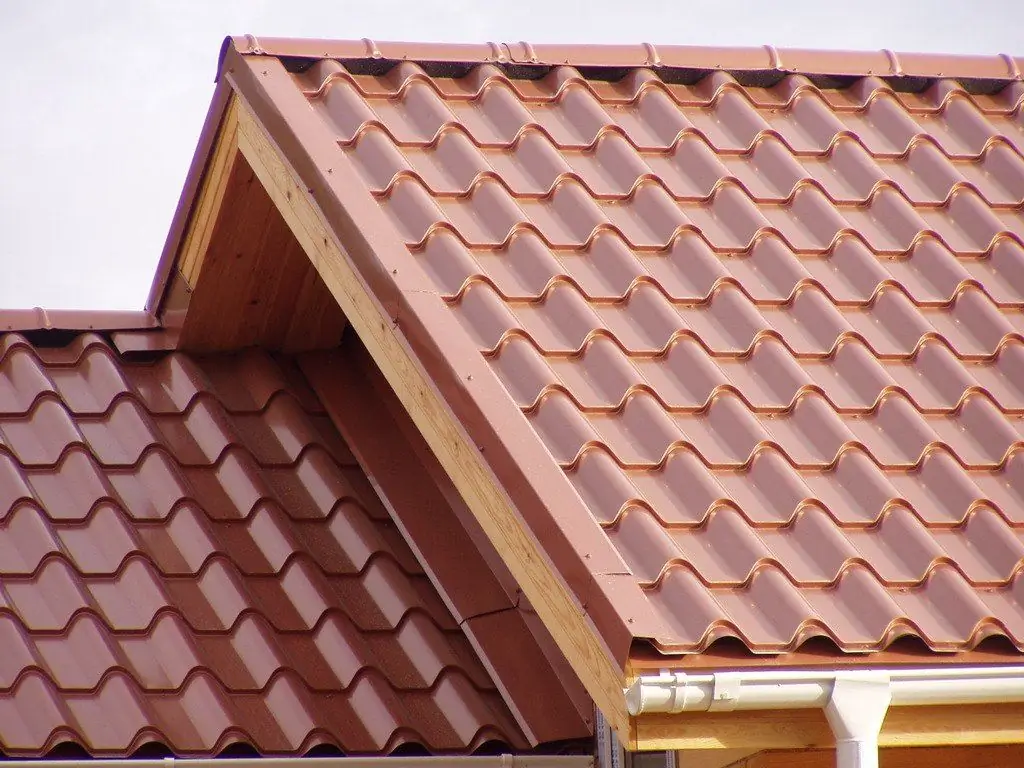
Methods and materials for the repair of metal roofing. What tool is needed and step-by-step instructions for eliminating roof breakages
Repair Of A Soft Roof, Including A Description Of Its Main Stages, As Well As Material And Tools For Work
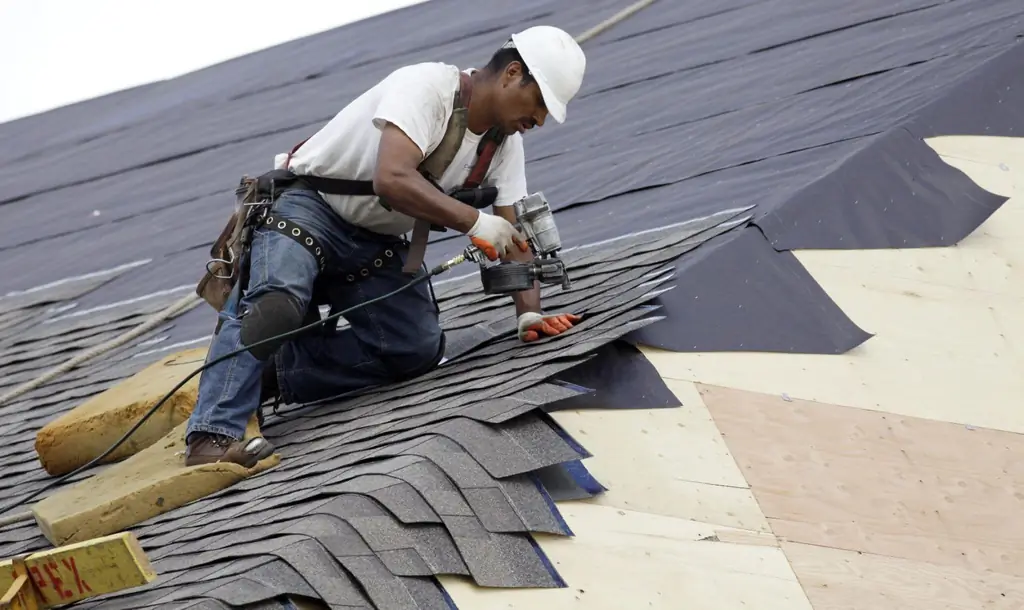
Diagnostics of the condition of the soft roof. Repair types and their main features. A brief overview of roofing materials and recommendations for their selection
Flat Roof Repair, Including A Description Of Its Main Stages, As Well As Material And Tools For Work
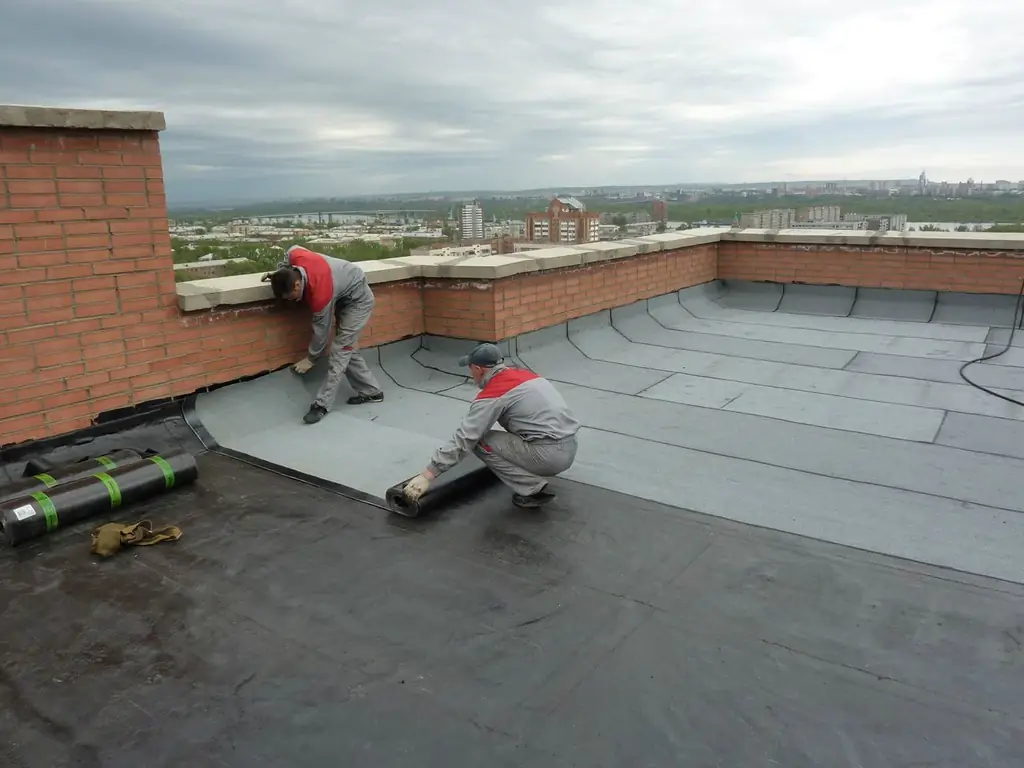
A brief description of the types of flat roof repair. Recommendations for the selection of roofing materials. Technology for eliminating various defects on flat roofs
Roof Waterproofing And Its Types, As Well As Features Of Its Design And Installation, Depending On The Roofing Material
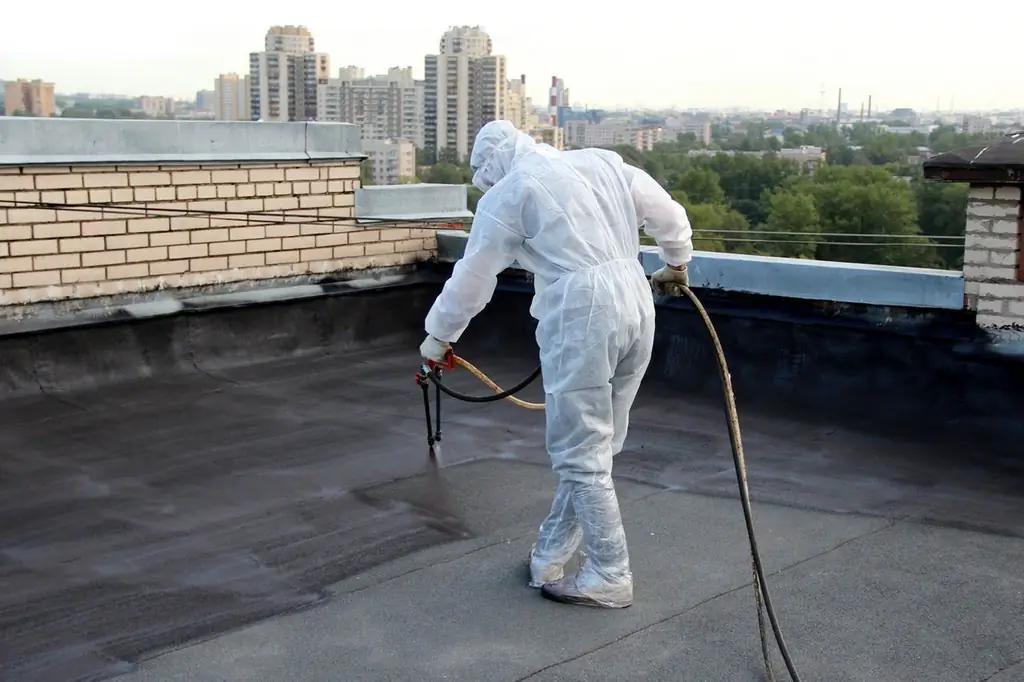
What materials can be used to arrange reliable waterproofing of the roof and how to install it
The Device And Installation Of The Rafter System, As Well As A Step-by-step Description Of The Stages Of Work
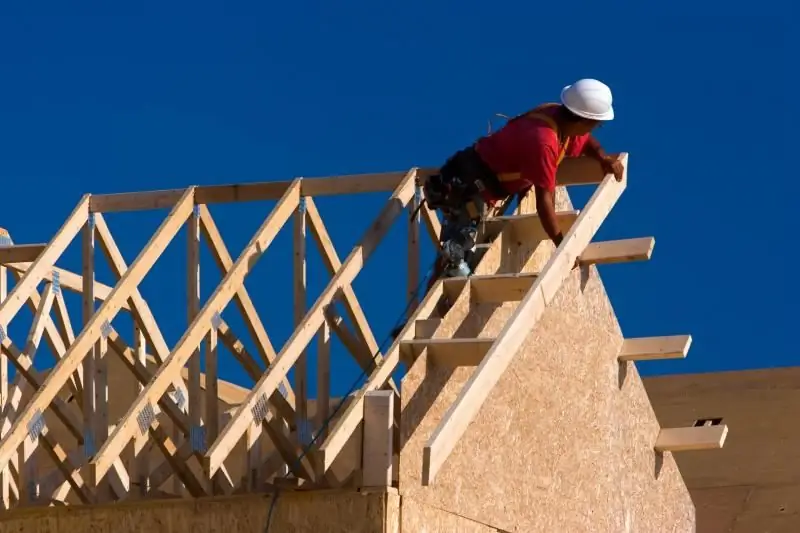
Options for the device of the rafter group. Roof structure with a complex rafter system. Do-it-yourself knots and methods of attaching rafter legs step by step
